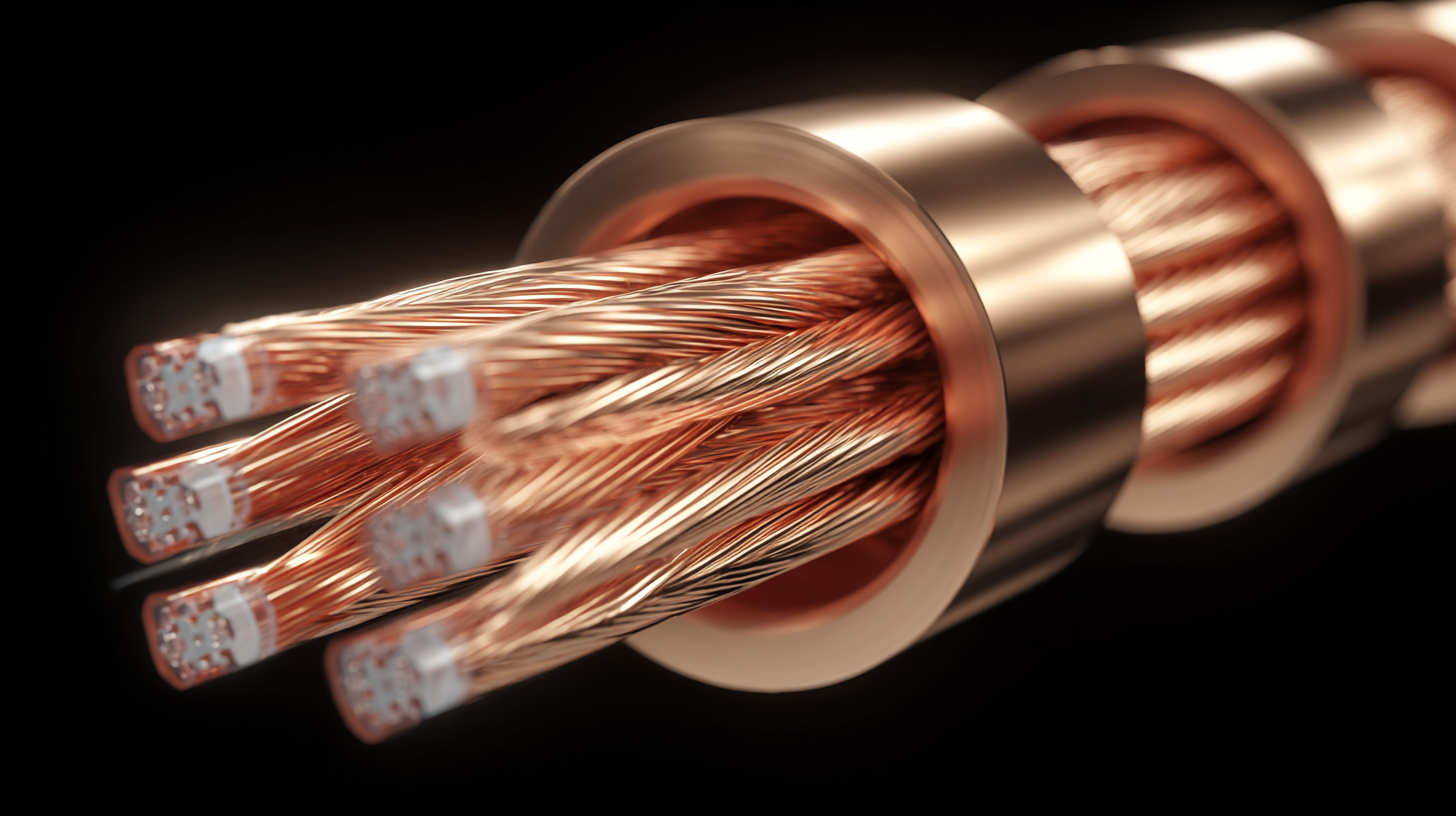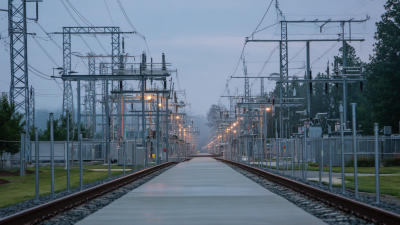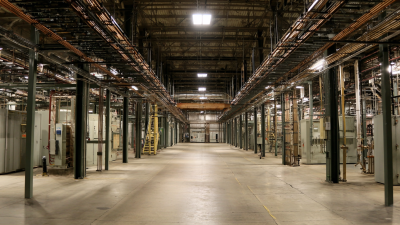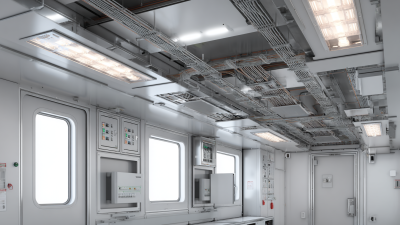Leave Your Message
-
Phone
-
E-mail
-
Whatsapp
-
Whatsapp


In the rapidly evolving landscape of modern electrical systems, the demand for efficient and reliable power distribution solutions has never been greater. One technology that stands out for its numerous advantages is the Copper Dense Busway. This innovative approach to power distribution not only optimizes space utilization but also enhances electrical performance and safety.
 With the increasing need for high-density power solutions in various applications, from commercial buildings to industrial facilities, understanding the benefits of Copper Dense Busway becomes essential for engineers and decision-makers alike.
This article will delve into the key advantages and diverse applications of Copper Dense Busway, offering practical tips for integrating this technology into contemporary electrical infrastructures, ultimately supporting the ongoing quest for sustainable and efficient energy management.
With the increasing need for high-density power solutions in various applications, from commercial buildings to industrial facilities, understanding the benefits of Copper Dense Busway becomes essential for engineers and decision-makers alike.
This article will delve into the key advantages and diverse applications of Copper Dense Busway, offering practical tips for integrating this technology into contemporary electrical infrastructures, ultimately supporting the ongoing quest for sustainable and efficient energy management.
 Copper dense busways are increasingly recognized for their role in modern electrical systems, particularly due to their effectiveness in reducing energy loss. Research indicates that energy losses in electrical systems can account for up to 10% of total energy consumption, predominantly through resistance in conductors. The high conductivity of copper significantly minimizes these losses. According to a report by the International Copper Association, implementing copper busways can reduce energy losses by around 30% when compared to traditional aluminum systems, leading to substantial savings over time.
Copper dense busways are increasingly recognized for their role in modern electrical systems, particularly due to their effectiveness in reducing energy loss. Research indicates that energy losses in electrical systems can account for up to 10% of total energy consumption, predominantly through resistance in conductors. The high conductivity of copper significantly minimizes these losses. According to a report by the International Copper Association, implementing copper busways can reduce energy losses by around 30% when compared to traditional aluminum systems, leading to substantial savings over time.
In addition to lower energy loss, copper dense busways offer a compact design that provides more efficient space utilization within electrical installations. This can be crucial in industries where space is at a premium. The National Electrical Manufacturers Association (NEMA) emphasizes that copper busways not only enhance system efficiency but also contribute to a lower overall carbon footprint. As energy costs rise and sustainability becomes a priority, the transition to copper dense busways seems inevitable for modern electrical systems striving for efficiency and reliability.
The integration of Copper Dense Busway in smart grid technology represents a significant advancement in the efficiency and reliability of modern electrical systems. As smart grids aim to enhance electricity distribution by incorporating digital communication technology, the role of copper busways becomes crucial. Their superior conductivity ensures minimal energy loss during transmission, thus optimizing the overall performance of smart grids. By providing a robust pathway for high current applications, copper dense busways facilitate the seamless integration of renewable energy sources and improve load management.
Furthermore, the adaptability of copper busway systems aligns perfectly with the dynamic requirements of smart grids. These systems can be easily modified or expanded to accommodate fluctuating energy demands, making them ideal for environments where flexibility is key. The ability to rapidly respond to changes in energy supply and demand not only enhances grid reliability but also supports the incorporation of cutting-edge technologies such as energy storage and electric vehicle charging stations. As utilities continue to transition towards smarter infrastructure, the role of copper dense busway systems in ensuring efficient and agile energy distribution will be increasingly vital.
| Aspect | Description | Benefits | Applications |
|---|---|---|---|
| Material | Copper | High conductivity, durability | Commercial buildings, data centers |
| Efficiency | Minimized power loss | Reduces operational costs | Manufacturing plants |
| Installation | Flexible and modular design | Easier upgrades and expansions | Smart grid applications |
| Safety | Low fire risk | Enhanced safety for personnel | Utility substations |
| Integration | Compatible with various technologies | Supports advanced monitoring | Smart cities, renewable energy |
Copper dense busway systems have emerged as a superior alternative to traditional wiring systems in modern electrical applications. Unlike conventional wiring, which can suffer from limitations related to flexibility and space, copper dense busways are designed to optimize physical space while delivering high power efficiency. Their compact design allows for easier installation in tight locations, making them ideal for urban settings and advanced industrial environments. Moreover, these systems can accommodate higher current capacities, reducing the risk of overheating and electrical failures.
In addition to their physical advantages, copper dense busways also offer significant benefits in terms of performance. They exhibit lower electrical resistance, which translates to increased energy efficiency and reduced operational costs. Traditional wiring systems often require extensive maintenance due to wear and tear; however, busway systems tend to have longer lifespans and require less upkeep. Furthermore, because they are modular and customizable, copper dense busways allow for easy expansion and adaptation to changing electrical loads, making them a flexible choice for evolving modern infrastructures.
This chart compares key performance and cost metrics between Copper Dense Busway and Traditional Wiring Systems, highlighting the advantages of utilizing Copper Dense Busway in modern electrical systems.
In recent years, the adoption of Copper Dense Busway in industrial automation has been on the rise due to its efficiency and reliability. This technology provides a robust electrical distribution system that effectively handles high current loads while minimizing energy losses. Its compact form allows for easier installation in tight spaces, making it ideal for factories and production environments where maximizing floor space is critical.
When implementing Copper Dense Busway, one important tip is to ensure proper thermal management. Adequate cooling mechanisms should be integrated to maintain optimal operating temperatures, as excessive heat can affect performance and longevity. Additionally, regular inspections and maintenance routines can prevent potential disruptions in industrial operations.
Another significant benefit of this technology is its flexibility in modular design. Copper Dense Busway systems can be easily expanded or reconfigured to adapt to changing production needs. This adaptability not only saves time and costs in future upgrades but also supports the evolving landscape of automation and smart manufacturing. As industries continue to explore innovative solutions, the Copper Dense Busway stands out as a key player in enhancing efficiency and sustainability.
The technological landscape of electrical systems is rapidly evolving, and copper dense busway technology stands out as a key area of advancement. As industries strive for greater efficiency and sustainability, the development of copper dense busways is aligning with these goals. Innovations in materials and design are enhancing conductivity and thermal management, leading to improved performance under demanding operational conditions. This evolution not only maximizes energy efficiency but also reduces the overall footprint of electrical installations.

Looking ahead, trends suggest that the integration of smart technology into copper dense busway systems will drive further enhancements. With the advent of IoT and advanced monitoring systems, operators will be able to achieve real-time insights into busway performance, enabling predictive maintenance and enhanced operational reliability. Additionally, the push for sustainability is leading to the exploration of recyclable materials and eco-friendly manufacturing processes in copper busway production. This commitment to innovation and sustainability positions copper dense busways as integral components of future electrical infrastructures, fostering not only operational excellence but also environmental responsibility.






